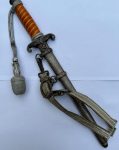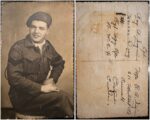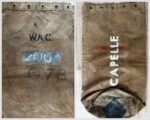The Dutch Military Order of William for Major Falloon
This post is also available in:
 Nederlands
Nederlands
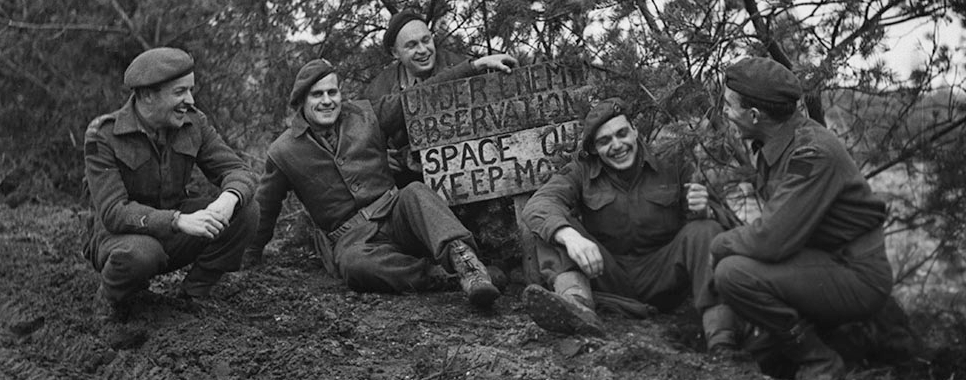
During the foggy and cold night of December 19/20, 1944, Operation Dynamite started. This so-called ‘Fighting Patrol’ of the Canadian South Saskatchewan Regiment was aimed at capturing a German soldier in the area around the Breedeweg in Groesbeek.
Operation Dynamite
The plan seemed simple on paper, three platoons would attack a group of houses and a German communication trench. After capturing a German soldier, they could retreat. The code word “Oyster” was used for the start of this operation (H-Hour). The start line was the defensive position held by the A Company of the Queen’s Own Cameron Highlanders of Canada under the command of Major Falloon. The fighting patrol was repelled with heavy casualties and the A Company of the Queen’s Own Cameron Highlanders of Canada became subjected to intense German artillery and machine gun fire. Both wireless and line communications back to A Company Headquarters failed as a result of this enemy fire.
Majoor Falloon springs into action
Major Falloon, fearing that his forward troops might be in difficulty and with complete disregard for his own safety, went forward through intense shell fire and reached the forward positions. Just as he arrived at the Platoon Headquarters, the barn in which several wounded men of the South Saskatchewan Regiment had been placed, caught fire.
Mortar bombs were falling nearby and machine gun fire was sweeping the area. Heedless of the danger involved Major Falloon led a group of men to extinguish the fire, and himself climbed to the roof of the barn to beat out the flames, even though under observation from the nearby enemy positions. Inspired by his cool, daring leadership, the men succeeded in extinguishing the fire.
Assuring himself that the situation was well-in-hand, Major Falloon was about to return to his headquarters, when he learned that the few available stretcher bearers were having difficulty evacuating the numerous casualties. Once more this Officer won the admiration of all those present by personally assisting in carrying back a badly wounded soldier whose life was at stake and who required immediate medical attention. During the journey back to Company Headquarters, the stretcher bearer himself became wounded. Major Falloon quickly and deftly administered first aid to him and they resumed the journey, returning to his headquarters from where he rendered a complete report of the situation at the front.
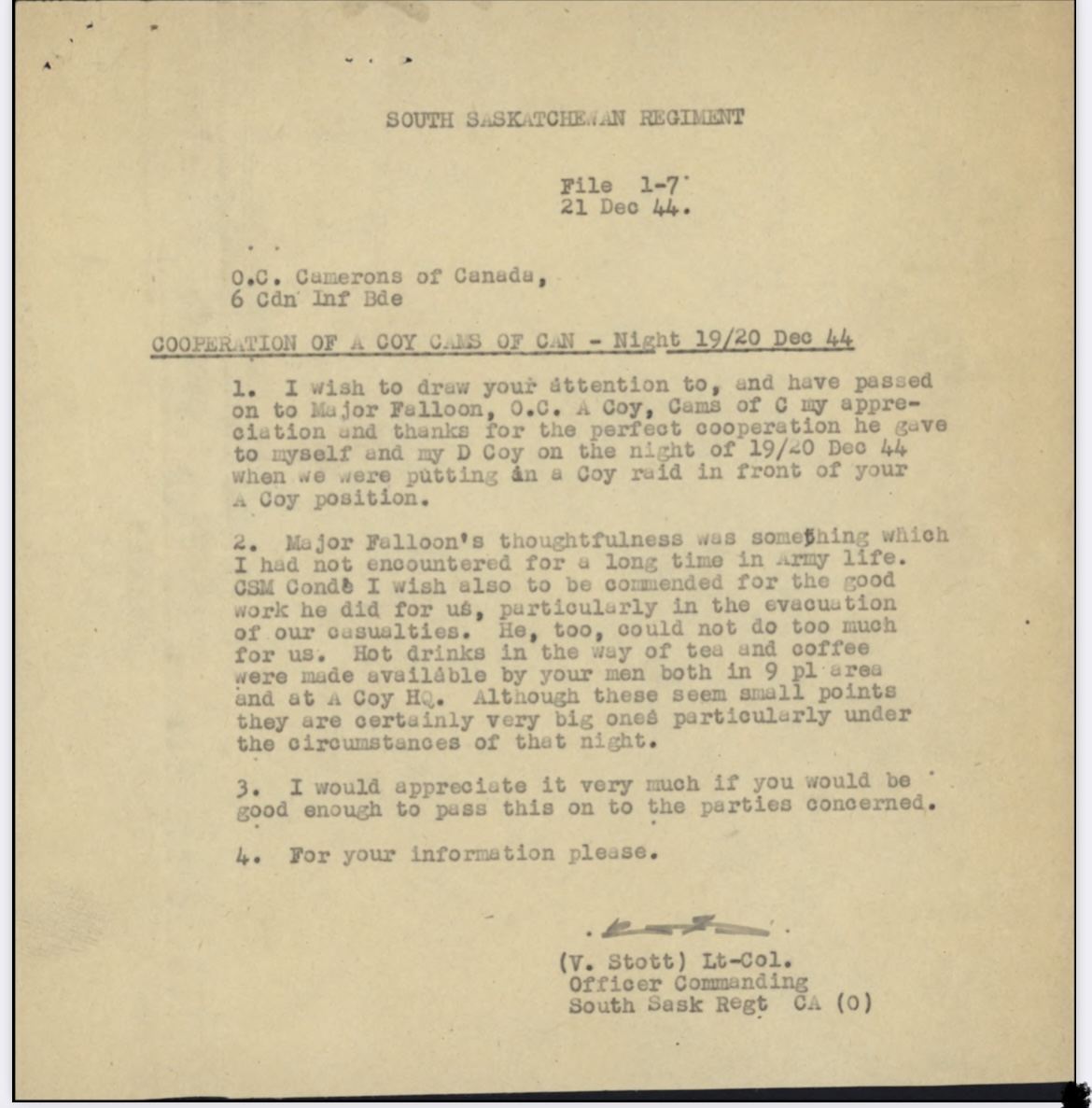
Report from Lieutenant Colonel Vernon Stott, Commander of the South Saskatchewan Regiment, about Major Falloon’s heroic action. Library and Archives Canada.
A Military William Order for Major Falloon
During the liberation day of the Netherlands, 5 May 1945, Major Falloon died as a result of wounds incurred on a similar occasion, when he was again carrying out self-sacrificing tasks, which were typical of his conduct throughout the many hard-fought battles during the liberation of the Netherlands. In this fighting patrol the South Saskatchewan Regiment had 19 wounded, 4 killed and 4 missing. Among those killed were Privates Henry Pospisil and George J. Lightfoot. Shortly before operation Dynamite (November 30, 1944) they had been photographed in the woods of Mook (see photo). During this operation they captured 1 German soldier of the Grenadier-Regiment 1225, killed 9 and wounded 13. In December 1945 Major Falloon was posthumously awarded the Dutch decoration, the Military Order of William (MWO), 4th Class Knight.
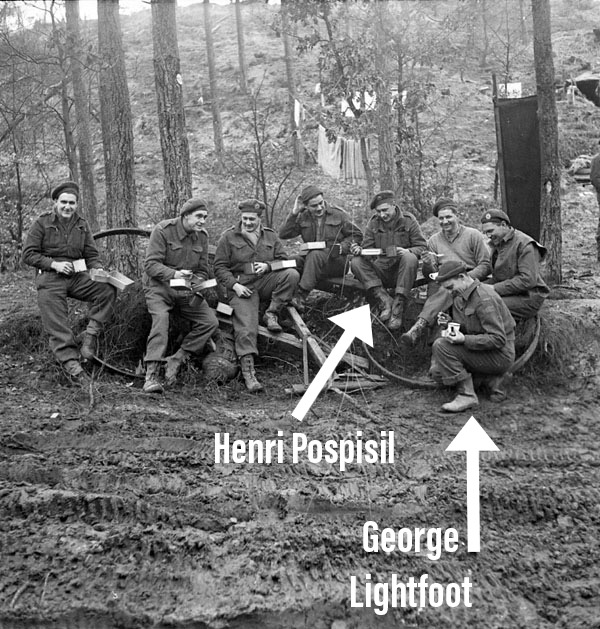
Canadian soldiers from D Company, South Saskatchewan Regiment in the woods of Mook on November 30, 1944. Library and Archives Canada.
Sources operation Dynamite:
- War Diary, South Saskatchewan Regiment, December 1944. Library and Archives Canada.
- War Diary, Queen’s Own Cameron Highlanders of Canada, December 1944. Library and Archives Canada.
- Recommendation report Hugh Philip Falloon. Library and Archives Canada.



